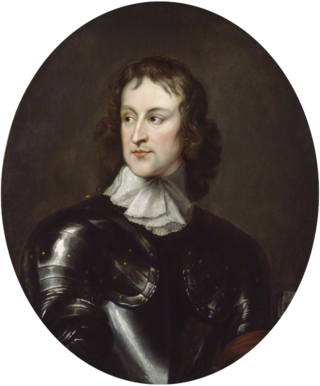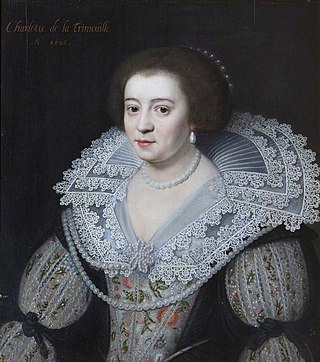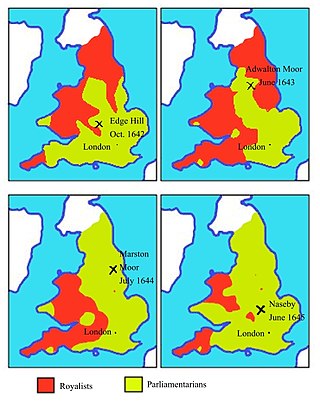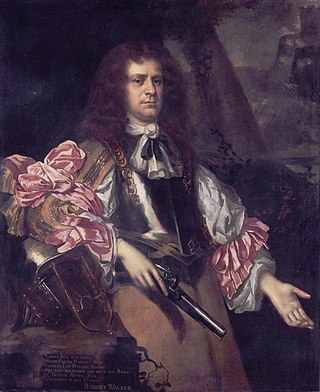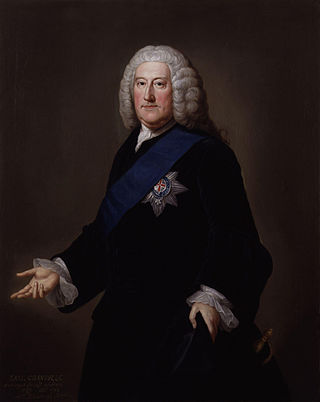History
From 1642 to 1651, England was torn apart by a series of internal conflicts known as the English Civil War between the Charles I of England (and later Charles II of England) and those who supported Parliament. The nature of the engagement was primarily based on whether the monarchy wielded absolute power over its subjects or was a constitutional monarchy and had to rule alongside a legislative body (e.g. English Parliament). As the war became more protracted, hostilities eventually spread to other parts of the British Isles (notably Scotland and Ireland) yet the Channel Islands were gradually embroiled in the conflict as well. While there was some support for Parliament amongst the island's inhabitants, Jersey under the de Carterets (see Sir George Carteret and Sir Philippe de Carteret II) were able to secure the island for the King throughout much of the civil war period. Guernsey, on the other hand, sided with the Parliamentarian cause, though Castle Cornet was held by Royalist sympathiser, governor Sir Peter Osborne, until 1651.
The beginnings of the Conflict on Jersey
On 26 March 1642 [lower-alpha 1] a petition was presented to the Long Parliament calling for the arrest of the then Governor and Bailiff Sir Philippe de Carteret on charges of mis-government. The petitions authors were a committee of several jurats notably Mr De La Hague, Mr Sammares, Mr Maufant, Mr Bisson, and Mr Hérault. They were joined by an unlikely ally, the Dean of Jersey, David Bandinel. The chief charges were those of mis-governance, nepotism and cronyism displayed by Sir Philippe. [2] [3] [4]
One aspect noticeably absent from petition are religious differences which came to dominate similar protests in England, this is due in part to Sir Philippe's own faith which in England would have been seen as favourable to Parliament. The dean, on the other hand, had been an enemy of Parliament, being arrested in 1641 for imposing episcopal governance on the island during the 1620s and then jumping bail to return to Jersey. [5] Another key figure Pierre d'Assigny was a Huguenot, given shelter by de Carteret on the island and became minister of the Town Church, against the Dean's wishes who was opposed to d'Assigny and de Carteret's Calvinist views. In spite of this early friendship d'Assigny would become an enemy of de Carteret.
Following the petition, and with the de Carteret name becoming known in Whitehall thanks to the privateering actions of George Carteret (Sir Philippe's nephew) Parliament issued an arrest warrant for Sir Philippe:
"By Vertue of an Order of the Lords and Commons in Parliament, Wee doe hereby authorise and require Mr La Hague, Mr Sammares, Mr Maphant, Mr Bisson, and Mr Herault, Justices of the Peace of the Isle of Jersey, them and every of them joinctly, and severally, by the Counsell and helpe of those of the said Island, who stand well affected to the King and Parliament; to the maintenance of the Protestant Religion, the lawes and liberties of the Kingdome, and priviledges of Parliament, to apprehend the person of Sir Philip Carteret, Knight, Lieftenant Governor of the Island." [3] [4]
However, he refused to be arrested in the name of Parliament, declaring in March 1643 that "This Island has nothing to doe with Parliament but only to the King in Council". [6] From a constitutional perspective this was correct, but de Carteret had made many enemies and they had been pushed towards Parliament by the king's steadfast support for Sir Philippe. Much of the island rebelled lead in part by a committee of jurats which had formed a bloc in the States against de Carteret, the Dean of Jersey and also the firebrand Huguenot preacher Pierre d'Assigny then Minister of the Town Church. Sir Philippe faced with the militia marching on the town had to flee to Elizabeth Castle while his wife and a son managed to successfully seize the fortress of Mont Orgueil located at the east of the island. [7]
The Parliamentarian faction began the construction of works with which to bombard Elizabeth Castle, the yard of the Town Church was converted into an artillery battery. Under the instructions of Pierre d'Assigny (Minister of the Town Church) further batteries were constructed on the Town Hill, however the population was becoming increasingly reluctant to cooperate with the Parliamentarian leadership. Works were also constructed with which to bombard Mont Orgueil Castle. Modern cannon were received from England, however these were deployed only at the last minute, and also poorly and had little or no effect on breaking the deadlock. The Royalists mounted several skirmishes towards St. Helier and the batteries, however there was very little direct combat in the period most of the fighting being gunnery exchanges at long range with only minimal effect. [8]
The recapture of Jersey by the Royalists
With the capture of Jersey's only two fortresses, the island fell to the royalist cause within the year and, following the death of Sir Philippe in 1643, his nephew George Carteret, took over operations for the royalists. In order to fund the military presence in the island, Carteret took to privateering. [9] Along with his privateering exploits, George Carteret also sought to imprisoning Parliamentarian supporters and confiscating their property in order to fund the royalist expenses. [10] However this alone was not enough, the Royalist cause by 1645 becoming increasingly desperate was in urgent need of revenues, this meant more unpopular taxation. A new Court House in the Royal Square was also constructed as a symbol of royal power prominently displaying the arms of both Carteret and the king.
The Prince of Wales, the future Charles II, was given sanctuary on the island of Jersey in 1646 and again in October 1649. Charles II was publicly proclaimed king after his father's death (following the first public proclamation in Edinburgh on 5 February 1649) in the Royal Square in St. Helier on 17 February 1649. [11] Charles' visits also led to unwelcome changes in the nature of the island's religion; with the initial rebellion the Church had reverted to its Presbyterian/Calvinist state, but with the Royalists regaining control this was reversed. These changes were branded by contemporary critics as "papist", the Jersey church was brought closer to that of the Caroline one which "greatly scandalised the people". [8] Combined with the large numbers of Catholic soldiers also on the island, the population was becoming disgruntled and Carteret's regime was becoming more autocratic and oppressive. Even Royalists who criticised Carteret's methods were not safe from persecution, as is the case with the Reverened le Cloche of St Ouen and his wife who disagreed with piracy and accused Carteret of being Godless. Similar views are shared by a fellow if moderate Royalist, Jean Chevalier in his journal. [8]
The fall of Jersey to Parliament
With Jersey being the last royalist stronghold in the British Isles (as well as the effects of George Carteret's raids on shipping), a Parliamentarian force of 84 ships carrying c. 3,000 men including 700-800 cavalry, under Colonel James Heane and naval commander Robert Blake, was commissioned in 1651 to retake the island.
The Parliamentarians landed on 20 October 1651 to the west of the island at St Ouen's Bay and managed defeat the royalist force assembled to meet them in a short confrontation. The Royalist forces were heavily demoralised, having been forced to march up and down the bay under fire from Parliamentary ships who were sailing around to disguise the point of their landing. Support for Royalism on the island was also far lower than it had been in 1643 when the Parliamentarian faction was ousted from power. Many were unwilling to fight and the majority of the island was apathetic to the Royalist cause. Contemporary chroniclers point to Carteret's dictatorship, changes to the religion and war weariness as a primary cause. [12] Many of the Royalist forces routed before any heavy fighting could take place, the majority of casualties were sustained by the cavalry who stayed longer, though even these were light. The Royalist forces were forced to retreat to their strongholds on the island. Morale amongst the Royalist garrison at Mont Orgueil was low, and they surrendered on amiable terms to Col. Heane, faced with the prospect of modern artillery being deployed on Mont St. Nichols, and with no prospect for relief the Old Castle would not have held for long, and the struggle would have largely been futile. [13]

Elizabeth Castle, a modern fortress, surrendered seven weeks later after a protracted siege on 15 December 1651. The Parliamentarian forces were forced to deploy heavy mortars in order to bomb the fortress into submission, several batteries were constructed, the Town Church was converted into a guardhouse. The Parliamentarian bombardment of the castle destroyed the medieval abbey church in the heart of the castle which was being used as a storehouse for ammunition and provisions. Having lost many of his supplies, and powder and with no hope of relief due to Parliamentarian naval presence there was no hope of repelling an enemy attack. Sir George Carteret surrendered to Col. Heane of the Parliamentarian forces on the similar terms to that of Mont Orgueil. He and the other Royalist defenders were granted permission to withdraw to the continent. [10] [14] It is said that Carteret and Heane departed amicably. [15]
In recognition for all the help given to him during his exile, Charles II gave George Carteret, bailiff and governor, a large grant of land in the American colonies, which he promptly named New Jersey, now part of the United States of America. [16] [17] In 1663 The States of Jersey were awarded a gilded Royal Mace in recognition of the island's support during Charles II's time in exile. [18]
Guernsey
Guernsey sided with the Parliamentarians. [19] Guernsey's decision was mainly related to the higher proportion of Calvinists and other Reformed churches, as well as Charles I's refusal to take up the case of some Guernsey seamen who had been captured by the Barbary corsairs.[ citation needed ] The allegiance was not unanimous, however; there were a few Royalist uprisings in the south-west of the island and Castle Cornet was held by the royalist governor, Sir Peter Osborne. From Castle Cornet, Osbourne was able to bombard the town of St. Peter Port unopposed, making sections of the town inhabitable. Throughout the period Castle Cornet was kept supplied by George Carteret.
In 1651, Jersey, which had been under royalist control since 1643, was seized by parliamentarian forces under Colonel James Heane. The Parliamentarians then captured the Crown of England that had belonged to Charles I which had been resident in the Court House in Jersey and brought it back to Guernsey, delivering it to the Governor of Castle Cornet as proof of Jersey's surrender. [20]
The castle surrendered on about 9 December 1651, [21] with the garrison permitted to march out bearing arms and to leave the island, effectively ending all royalist resistance to The Protectorate in the British Isles.
After the restoration of monarchy in 1660 the Parliamentary general John Lambert was imprisoned in on Guernsey. [22]


